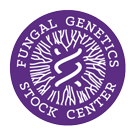Strain: Neurospora crassa
FGSC #4337
Reporting Genes: sn al-1
Species: crassa
Allele: JL301 34508
Alternate Strain Number: 1745
Mutagen: UV
Depositor: DDP
Linkage Group: IC IC
Mating Type: A
Genetic Background: SL
Genes

Reporting Genes: sn al-1
Species: crassa
Allele: JL301 34508
Alternate Strain Number: 1745
Mutagen: UV
Depositor: DDP
Linkage Group: IC IC
Mating Type: A
Genetic Background: SL
